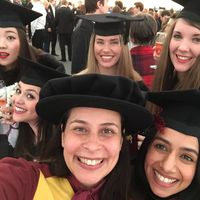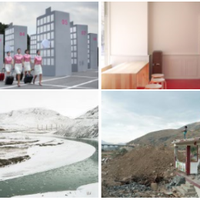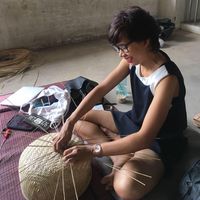#art&technology: How art and technology collaborations contribute to a sustainable world
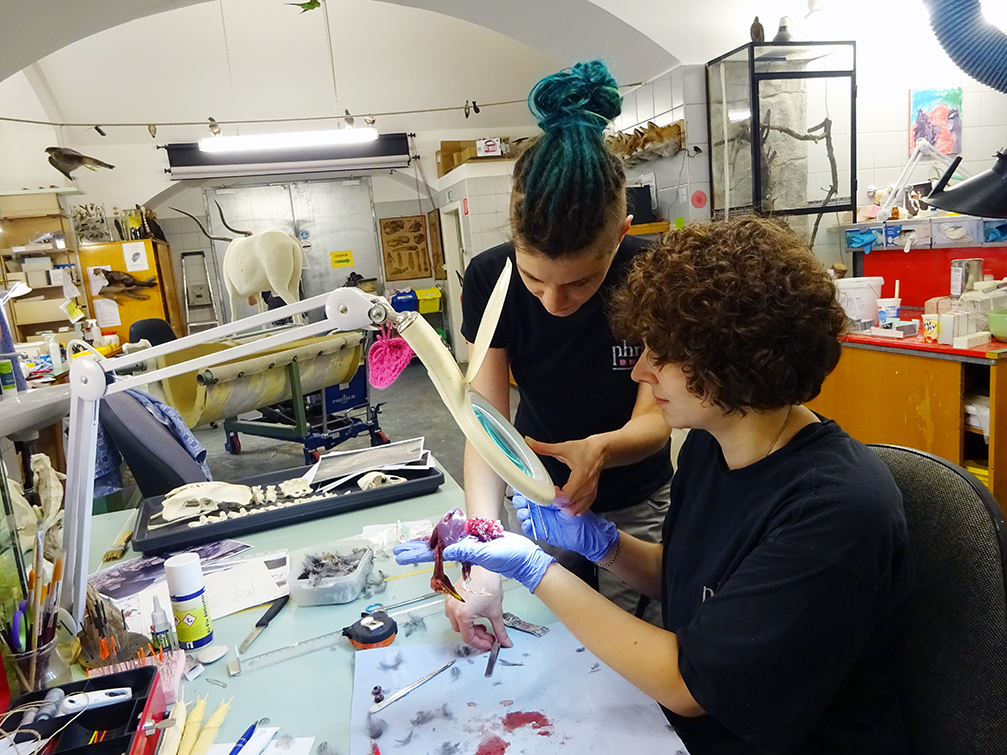
In culture360.ASEF.org’s series of articles on #art&technology, Catherine Sarah Young highlights the hidden processes behind taxidermied animals and other preserved specimens in her multimedia artwork and examines questions and potential solutions that art and technology can bring through collaborations.
Having a molecular biology, fine art, and interaction design background is a terrifying combination if you grew up with Asian parents. Yet, it was precisely this strange mix that gave me a prismatic lens to see the world and has been the catalyst for a very adventurous life.
In 2018, as one of the artists-in-residence of KulturKontakt Austria and the Austrian Federal Chancellery, I had the opportunity to live and pursue my practice on the grounds of Schloss Landon, a castle on the western side of the beautiful city of Vienna. The city is a mix of old buildings and new technology, which made it an interesting place to pursue my work.
Collaborations as creative resistance
Among the hallmarks of my practice are art and science collaborations with researchers and local communities, as I have found that this greatly enriched my work as an artist. While there can be pockets of isolation in an artist’s life, I have discovered that working with others in different disciplines and backgrounds can yield work of additional breadth and depth. Simply put, life just becomes more interesting.
Moreover, in a world that seems to be in a constant chaos, being an artist working with others functions as a kind of resistance, not just against the new normal of countries barricading themselves against others, but also against the archaic practice of disciplines locking themselves against one another, which still persists in some institutions.
I always visit the natural history museum of the city I am in. They have this ability to instill awe in the audiences that walk their halls. In Vienna, the Natural History Museum is centuries old and is featured on most travel guides. After visiting it half a dozen times, I felt that there was more to be discovered, and so I emailed the museum to ask for researchers who might wish to have a dialogue with an artist. Among those that very generously gave me access to their behind-the-scenes were the Department of Herpetology and the Department of Zoology.
Adventures with herpetologists and taxidermists
In the Department of Herpetology, Dr. Silke Schweiger, Curator, and Mr. Georg Gassner, Collection Manager, explained how the specimens are preserved. The reptiles and amphibians are immersed in appropriate solutions of ethanol and are sealed with bee resin in a procedure that has largely been unchanged for centuries. The department holds almost 200,000 specimens, with some being “type specimens”, or those whose characteristics define the species in official description.
Not far away in the Department of Zoology’s award-winning taxidermy lab, taxidermists Melina Franz and Mirjana Pavlovic showed me how they transformed dead animals for display in the museum.
First, a tissue sample was removed. In our session, the specimen was a dead bird found by a citizen and was stored for DNA sequencing. Feathers and flesh were then removed, and its skeleton was cleaned using beetles that ate the flesh of the animal, to leave only the bones. The specimens are made as lifelike as possible so that the public can emotionally connect with them.

Taxidermists Mirjana Paclovic and Melina Franz working on a bird specimen
(Photo Credit: Catherine Sarah Young)
I filled and photographed these conversations with the Museum in an ongoing multimedia series, Scientific Method. With each exhibition of the work, such as at the end of the residency at the Federal Chancellery, I hoped that I could draw the curtain from what is typically hidden from public, who can only see a fraction of the scientific processes that serve to create and store human knowledge.
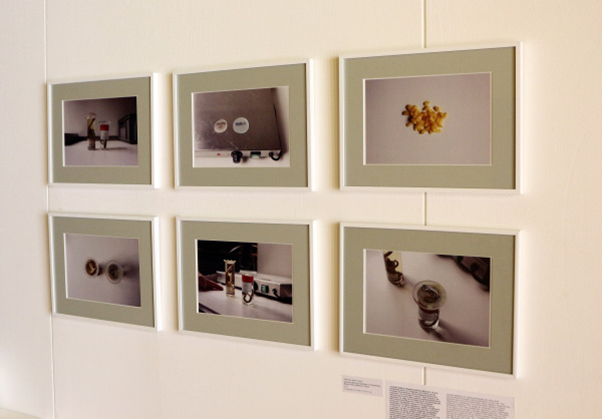
Photographs from Scientific Method exhibited at the Federal Chancellery
(Photo Credit: Catherine Sarah Young)
While the residency has long been over, my work is never finished. For artists who have a diverse and long lasting practice, the outcomes from collaborations can thus have longer lifespans than temporary exhibitions in museums, allowing us to inject these into the current discourse and bring new relevance to these topics without additional effort from our collaborators.
Conversations about sustainability
Most importantly, art and technology collaborations trigger important conversations. Artists and scientists can learn from each other and each unlock a fascinating new world that can yield new ways of thinking. Also, in learning about our similar struggles, such as with climate change deniers, anti-vaxxers, etc., we discover new allies and colleagues.
In addition, as an artist who has diverse experiences and backgrounds, the works can help to ignite critical conversations between the Global North and South, whose communities can have vastly different experiences with respect to climate change.
In the past decade or so, I have been very fortunate to have participated in more than a dozen residencies and fellowship programs that have helped to facilitate these art and technology collaborations. I can attest that these experiences, not just in these various cities but also with artists and leaders from all over the world, have promoted a kind of diplomacy that only arts and culture can provide — the equal space by which to do one of the most human actions there is: to create and to connect with others. This has given me things that a regular tourist experience could not have, and as such I count several European artists as friends.

Image from the multimedia series, Scientific Method, featuring specimens from the Department of Herpetology of the Natural History Museum, Vienna. (Photo Credit: Catherine Sarah Young)
Promoting society’s resilience
Resilience is a muscle that we need to flex as we negotiate our way through the broken systems that have yielded our world that seems to burst at the seams. Dismantling the ivory towers of science is critical to building a sustainable planet because this helps in educating and motivating a society that is increasingly besieged by fake news and populism.
When people, especially children and youth who are usually the primary audience of these large public institutions, are trained to ask questions and critique the systems that they are in, they will then be empowered to work against the science denialists of the world that are increasingly encroaching on our freedoms.
The author’s art residency was generously supported by the Austrian Federal Chancellery / Bundeskanzleramt Austria and KulturKontakt Austria. Thank you to Dr. Silke Schweiger, Curator of the Department of Herpetology; and Ms. Melina Franz and Ms. Mirjana Pavlovic, 1st Zoological Department, Natural History Museum, Vienna.
This article is written by Catherine Sarah Young, a Chinese-Filipina artist, designer, writer, and public speaker. Her experimental and interdisciplinary practice evokes conversation about our current systems, collective futures, and individual choices. She uses her background in molecular biology, fine art, and interaction design to create works that investigate nature, our role in nature, and the tensions between nature and technology. Her most recent projects took place around China, Southeast Asia, Austria, and the Amazon. She is currently a Scientia scholar at University of New South Wales and an Obama Leader for Asia-Pacific. Find her work at www.theperceptionalist.com.
Similar content
posted on
19 Aug 2013
05 May 2021
deadline
15 Oct 2016


